
Roots
The sun-drenched sands of ancient Egypt held a profound respect for personal presentation, where hair, or its artful replacement, played a significant role. It was not merely about appearance; a deeper consideration for comfort, social standing, and purity guided the choices made regarding one’s crown. The desert climate, with its relentless heat and ever-present dust, presented unique challenges to maintaining natural hair. This environment fostered a sophisticated approach to grooming, where practicality and aesthetics often converged.
From the earliest dynastic periods, archaeological discoveries reveal a society that invested considerable thought and resources into hair care. Combs crafted from ivory, sometimes adorned with depictions of local wildlife, speak to a tradition stretching back to 3900 BCE. These artifacts, alongside cosmetic boxes and hair ornaments found in tombs, underscore the importance of hair and its adornment, not just for earthly life, but for the journey into the afterlife as well. The very essence of being, for ancient Egyptians, extended beyond the temporal, with personal presentation remaining a key aspect of eternal existence.
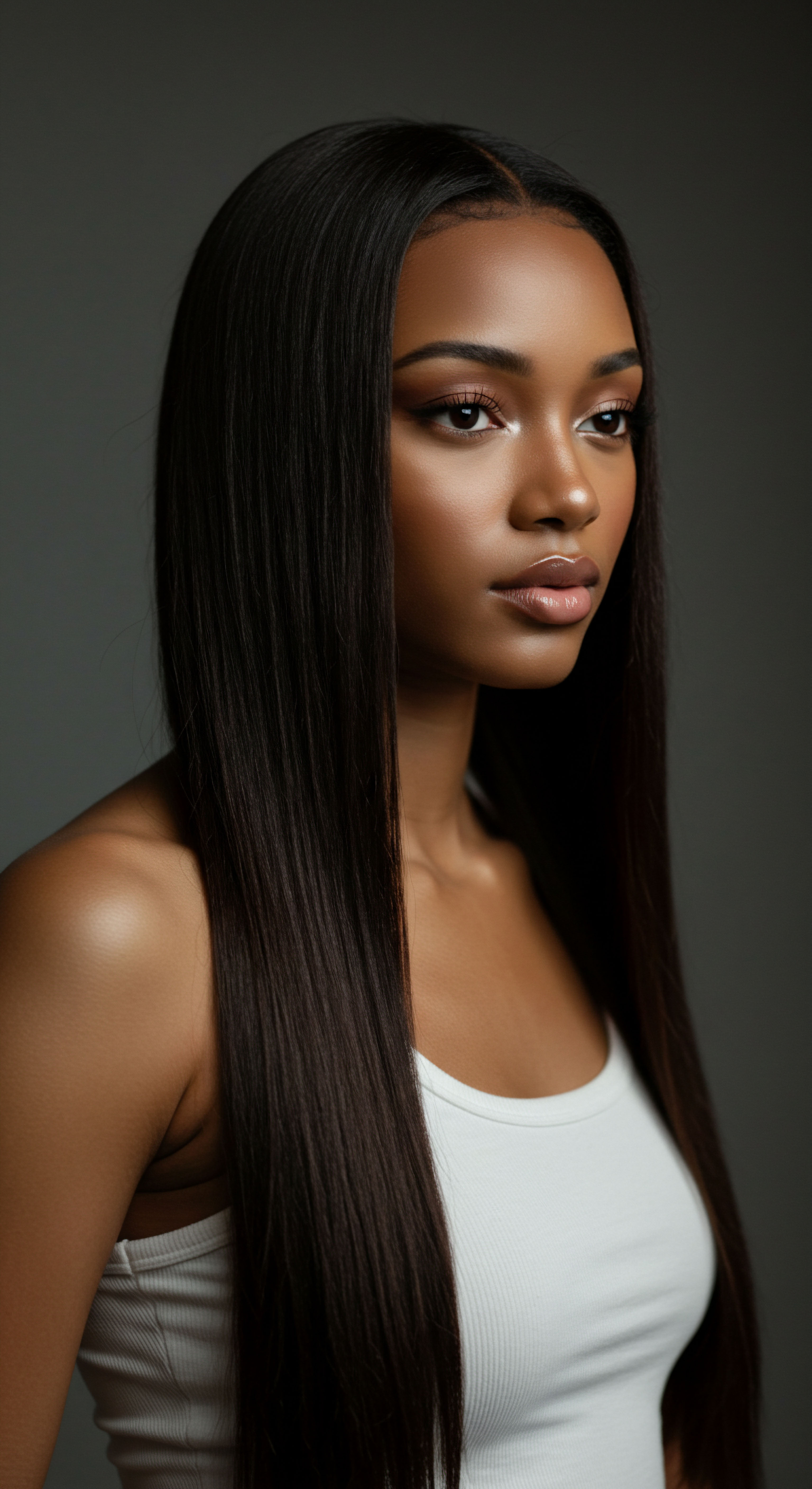
Hair as a Symbol of Identity and Status
In ancient Egyptian society, hair served as a potent marker of identity, conveying information about gender, age, and social standing. The elite, including royalty and religious figures, viewed hair care as a demonstration of their elevated position and authority. While natural hair was styled and adorned, the use of wigs became a widespread practice across various social strata, offering a versatile solution to both practical concerns and stylistic aspirations.
- Hair Length ❉ The length and style of hair often communicated social position. For instance, long hair was generally predominant among women of all social standings throughout various periods, sometimes linked to perceptions of women as mothers and their connection to procreation.
- Shaved Heads ❉ Priests, in particular, maintained shaved heads to signify ritual purity and to prevent lice, which could compromise their sacred duties. This practice underscored a commitment to cleanliness that went beyond mere aesthetics, aligning with spiritual obligations.
- Children’s Hair ❉ Children, regardless of gender, often had their heads shaved, with a single side-lock remaining. This distinctive style served as a hieroglyphic symbol of youth and was sometimes associated with the protection of deities like Horus.
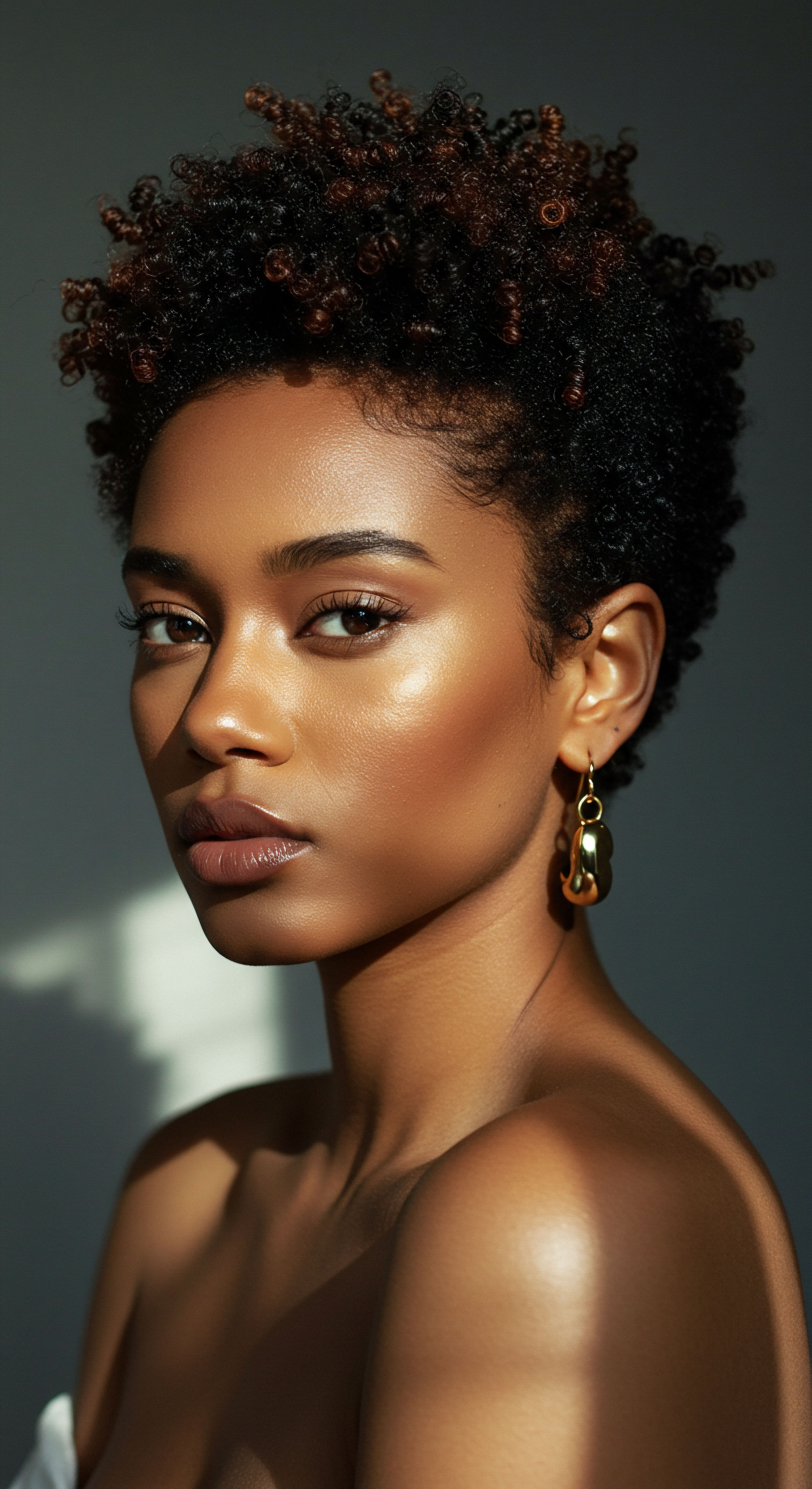
Anatomy of Ancient Egyptian Hair Care
The ancient Egyptians were keen observers of hair’s physical properties and developed methods to care for it, whether natural or artificial. Their understanding, though not framed in modern scientific terms, was deeply empirical, rooted in what worked to maintain health and appearance in their specific environment.
They employed various oils, such as almond and castor oils, to keep natural hair supple and smooth. These oils not only provided conditioning but also served a dual purpose in combating lice infestations. Combs, some made from fish bones, aided in the even distribution of these conditioning agents.
For those experiencing hair thinning or graying, remedies were sought, though their efficacy varied. Recipes for hair growth, some involving fenugreek seeds, speak to a long-standing concern for hair retention.
Ancient Egyptian hair practices were a sophisticated blend of practical necessity, social expression, and spiritual belief.
The materials used for hair care and wig construction were a testament to their resourcefulness. Human hair was a valuable commodity, often bought and sold for wig-making. For those of lesser means, wigs might incorporate plant fibers, wool, or even horsehair, demonstrating a pragmatic approach to materials while still striving for the desired aesthetic. Beeswax and resin were indispensable in setting styles, providing hold and a lustrous finish to both natural hair and elaborate wigs.
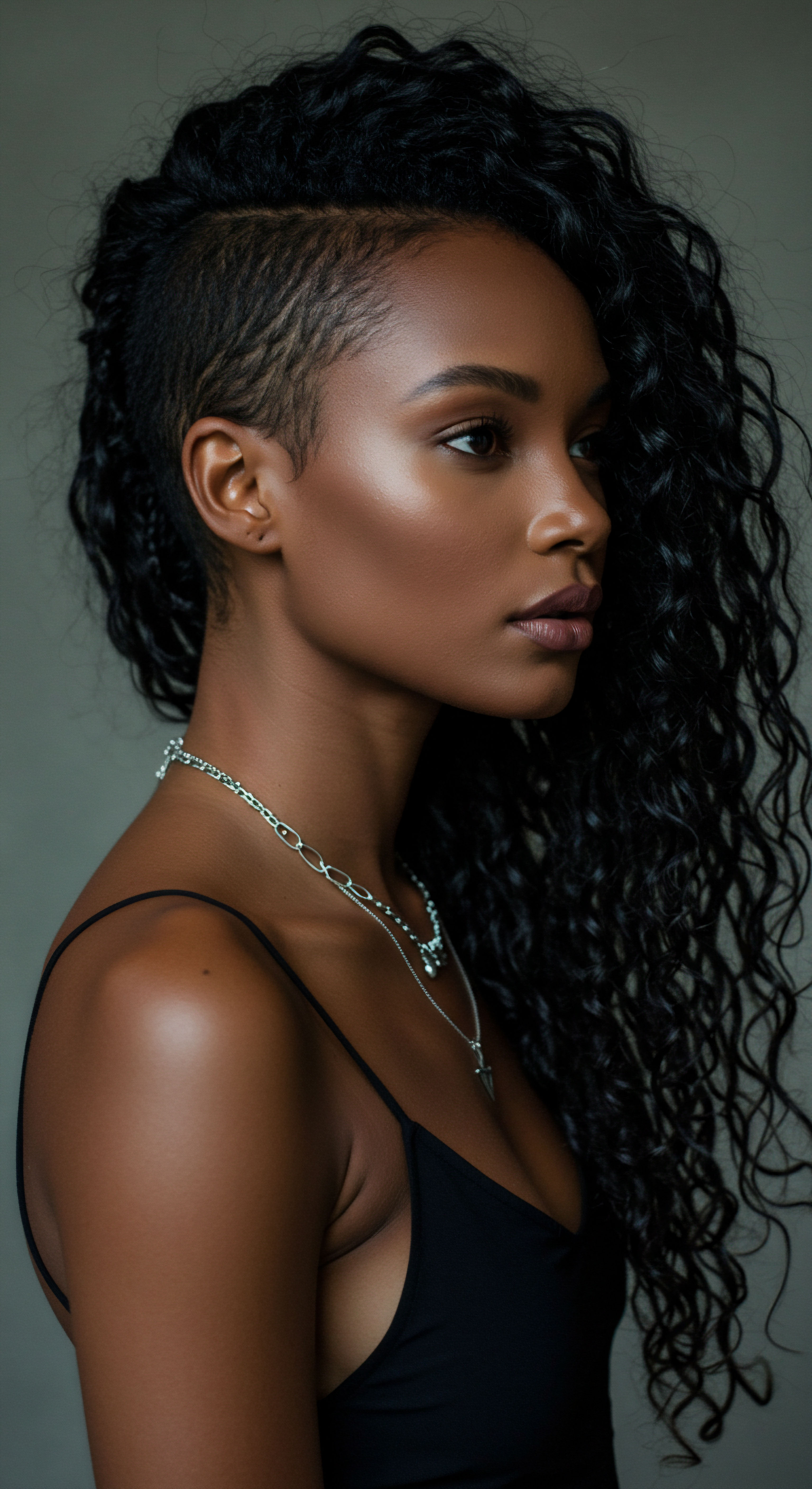
Ritual
Stepping into the daily routines of ancient Egyptians, one quickly observes that hair care was far from a simple act; it was a ritual, a deliberate sequence of practices that addressed both the physical and the symbolic. The pervasive presence of wigs within this culture speaks to a nuanced understanding of cleanliness and presentation, a thoughtful approach to maintaining well-being amidst the desert’s demands. These practices were not arbitrary but were woven into the very fabric of social interaction and personal comfort.
The warm climate presented a constant challenge for hygiene. Long, natural hair could become a breeding ground for pests and accumulate dust and sand, making cleanliness difficult. This environmental reality spurred the widespread adoption of head shaving, a practice that directly contributed to the prominence of wigs.
By removing natural hair, individuals could more easily maintain a clean scalp, mitigating the risk of lice infestations and ensuring a greater degree of comfort. This strategic removal of hair then paved the way for the wig, a meticulously crafted accessory that offered both protection and an expression of personal style.
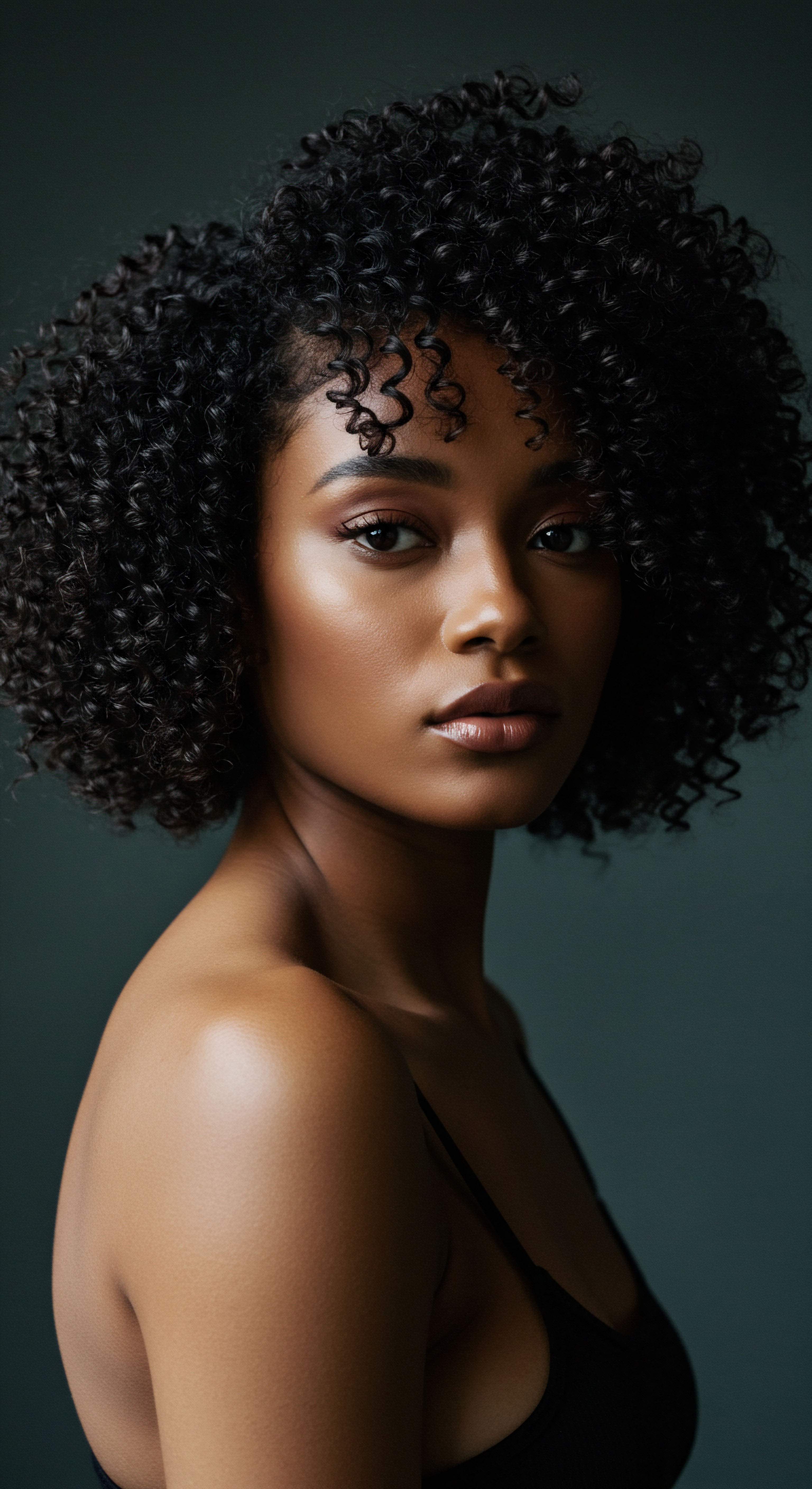
Wigs as a Shield Against Environmental Realities
The arid Egyptian climate necessitated protective measures for the scalp. Wigs, often thick and substantial, served as a barrier against the harsh sun, shielding the shaved or closely cropped head from direct exposure. Unlike a simple head covering, the construction of many wigs, particularly those with a mesh-like foundation, allowed for air circulation, helping to dissipate body heat and keep the wearer cool. This ingenious design provided both sun protection and a degree of ventilation, a testament to the practical considerations behind their creation.
Wigs were not merely adornments but essential tools for hygiene and protection in ancient Egypt’s challenging climate.
Beyond environmental protection, wigs played a central role in managing hygiene. Head lice were a persistent issue in ancient times, and archaeological evidence confirms their presence even on mummified remains. The ability to remove a wig for cleaning or airing, or to simply shave one’s head beneath it, offered a direct and effective method for preventing and controlling lice. Priests, whose ritual purity was paramount, frequently shaved their entire bodies to eliminate any potential for parasites, a practice documented by ancient historians like Herodotus.

The Craft of Wig Making and Maintenance
The creation of an ancient Egyptian wig was a testament to considerable skill and patience. Wigmakers utilized a variety of materials, with human hair being the most prized and costly. For those with less wealth, plant fibers, wool, or even horsehair might be incorporated.
The process began with a finely woven netting or mesh cap, often itself made of hair, which formed the wig’s base. Strands of hair, typically human, were then carefully attached to this cap. A common technique involved looping an inch of the hair’s root end around the horizontal mesh and securing it with beeswax and animal fat. A smaller sub-strand of about 15 hairs would then be wound around the main hair stem to ensure a firm hold.
These styling agents were crucial not only for construction but also for maintaining the wig’s elaborate form. Beeswax, one of the oldest cosmetic ingredients known, was used extensively to set curls and braids, ensuring styles remained intact even in the Egyptian heat. The discovery of a fat-based “gel” on mummy hair further indicates the use of such products to preserve hairstyles in both life and death.
Maintaining these elaborate hairpieces required regular attention. While natural hair could be washed and scented with oils, wigs, being removable, offered a distinct advantage for cleanliness. They could be aired, cleaned, and re-styled, separating the process of hair care from the daily bathing rituals of the body. This allowed for a higher standard of overall hygiene, as the wearer’s natural scalp could be attended to separately, free from the encumbrance of a permanent hairstyle.
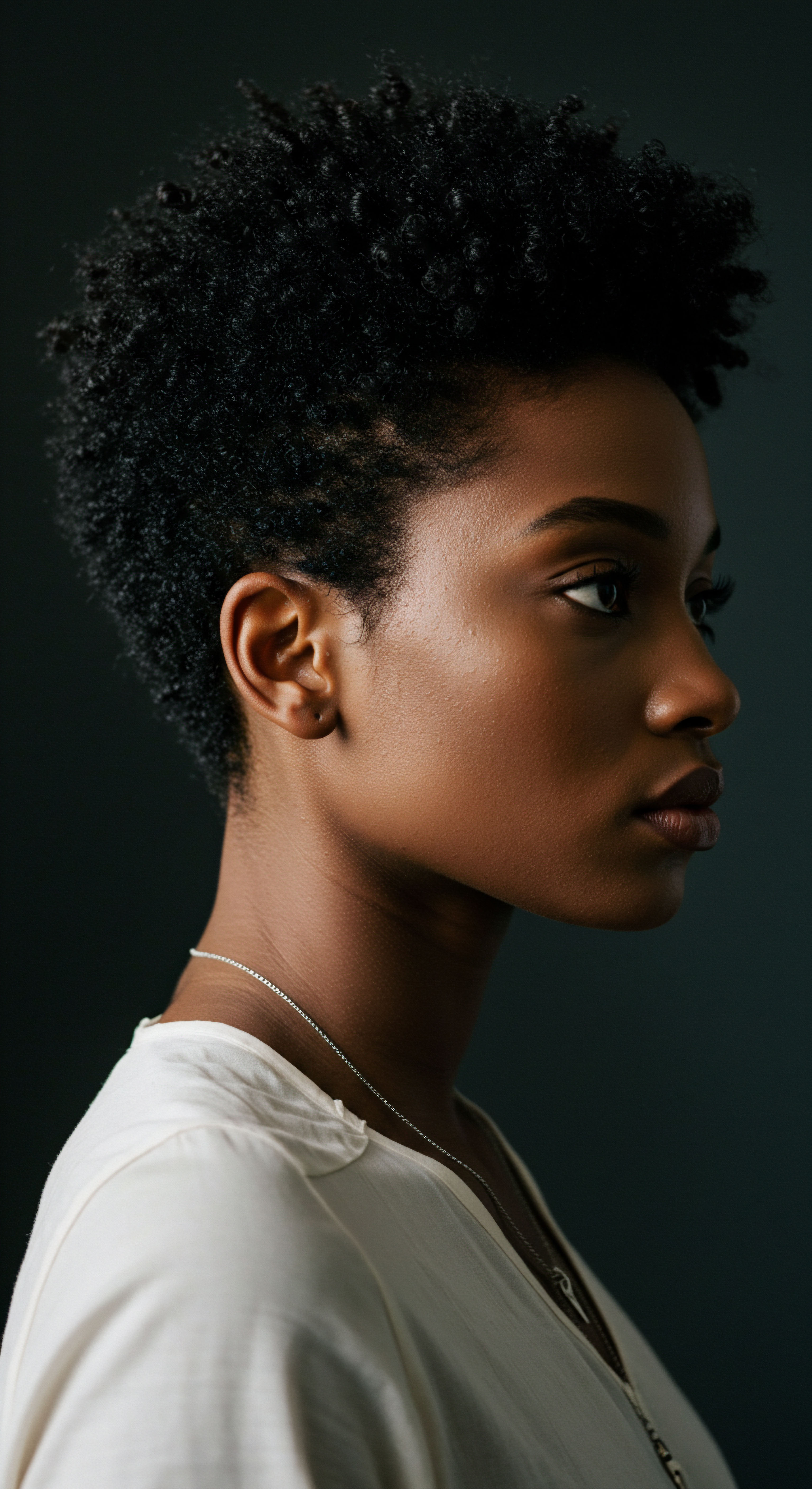
Relay
To consider the role of wigs in ancient Egyptian society solely through the lens of hygiene and status would be to miss the profound currents of cultural meaning and scientific ingenuity that shaped their existence. These elaborate hairpieces were far more than mere accessories; they were a dynamic interplay of artistry, practicality, and deeply held beliefs about identity, power, and the very nature of existence. Unraveling their significance requires a gaze that penetrates beyond the visible, seeking the intricate connections between form and function, the mundane and the sacred.
The desert environment, while challenging, also played a paradoxical role in preserving the very evidence that allows us to comprehend these ancient practices. The dry conditions naturally mummified bodies, including their hair, offering archaeologists a unique window into ancient hair care and styling. This remarkable preservation allows for scientific analysis, revealing not only the materials used but also the sophistication of ancient Egyptian cosmetology.

Did Wigs Also Offer Health Benefits Beyond Lice Prevention?
Beyond their primary function in lice prevention and sun protection, wigs may have offered other, less obvious health advantages. The constant exposure to dust and sand in ancient Egypt could irritate the scalp and lead to various skin conditions. A wig, acting as a physical barrier, could have minimized direct contact with these environmental irritants, potentially reducing instances of scalp discomfort or infection. While not explicitly stated in ancient texts as a primary health benefit, the protective layer a wig provided against the elements certainly contributed to overall comfort and well-being.
The application of fatty substances, such as beeswax and animal fat, to both natural hair and wigs also served a purpose beyond mere styling. These substances acted as emollients, providing a conditioning effect that would have kept hair moisturized and pliable in the dry climate. This is a subtle but significant aspect of their hair care, reflecting an intuitive understanding of lipid barriers and their role in maintaining hair health. Modern analysis of mummy hair has indeed revealed the presence of fat-based coatings, suggesting these were applied as styling products that also offered protective qualities.
The sophisticated craftsmanship of ancient Egyptian wigs speaks volumes about their societal importance and practical ingenuity.
Consider the meticulous construction of a high-quality wig. Some examples, like the 18th Dynasty wig in the British Museum, consist of hundreds of individual plaits coated with resin and beeswax. Such intricate work, taking up to 200 hours to complete for some pieces, speaks to an investment of time and skill that goes beyond simple vanity. It points to a deep societal value placed on these objects, not only for their aesthetic appeal but also for the multifaceted roles they played in daily life.

The Economic and Social Dimensions of Wig Ownership
The cost and labor involved in creating these hairpieces meant that complete wigs were largely restricted to the elite. Human hair itself was a valuable commodity, with its worth sometimes equated to gold in ancient accounts. This economic reality positioned wigs as clear indicators of wealth and social standing.
The more elaborate and finely crafted a wig, the higher the status it conveyed. This created a visual hierarchy, where the appearance of one’s hair, or lack thereof, directly communicated their place within the structured society.
For example, a study examining burial customs in ancient Egypt revealed that approximately 70% of Mummified Bodies from Royal or Aristocratic Tombs Were Buried with Wigs or Artificial Hair Coverings. This figure, derived from a survey of funerary practices, underscores the profound importance of these hairpieces, extending their significance beyond earthly life into the realm of the afterlife. It suggests a belief that maintaining one’s societal presentation, even in death, was crucial for the journey to rebirth. This statistic is particularly striking as it highlights a societal norm that permeated funerary rituals, emphasizing that wigs were not merely transient fashion statements but enduring symbols of identity and status.
| Material Human Hair |
| Purpose and Characteristics Finest quality, braided into hundreds of plaits, often coated with beeswax and resin for style and hold. |
| Social Class Usage Primarily elite, highly valued commodity. |
| Material Plant Fibers |
| Purpose and Characteristics Used to add volume or as a more affordable alternative to human hair. |
| Social Class Usage Middle and lower classes, or as filler in elite wigs. |
| Material Wool (especially black sheep) |
| Purpose and Characteristics High-quality alternative to human hair, also used for volume and texture. |
| Social Class Usage Elite and wealthier individuals. |
| Material Beeswax and Resin |
| Purpose and Characteristics Styling agents, adhesives, provided sheen and hold, preserved styles. |
| Social Class Usage All classes for hair care, but extensively in wig construction for all who could afford them. |
| Material Mesh Cap |
| Purpose and Characteristics Foundation for wig construction, often made of fine netting or hair itself. |
| Social Class Usage Universal for wig wearers. |
| Material The selection of materials for wigs often mirrored the wearer's societal standing, with human hair and wool signifying greater affluence. |
The very act of wearing a wig also carried symbolic weight. In some artistic depictions, a lock of natural hair might be shown peeking from beneath a wig, suggesting that these elements were sometimes used as an aesthetic complement rather than a complete replacement for natural hair. This hints at a sophisticated understanding of layered identity, where the artificial and the natural could coexist, each contributing to a person’s presented self.
Moreover, the symbolic dimensions extended to the afterlife. Wigs were often included among funerary objects, placed in tombs alongside the deceased. This practice indicates a belief that these personal adornments were necessary for the journey into the next world, a continuation of one’s earthly identity and status beyond the veil of death. The meticulous care of these funerary wigs, some even placed on carved wooden heads, speaks to the enduring significance of hair in the ancient Egyptian worldview.

Reflection
The journey through ancient Egyptian hair traditions, particularly the pervasive role of wigs, unveils a society deeply attuned to the interplay of practicality, social expression, and the profound undercurrents of belief. It is a reminder that the human desire for order, beauty, and a connection to something larger than oneself is a timeless pursuit, manifested in myriad ways across cultures and eras. The wig, in its intricate construction and multifaceted purpose, stands as a quiet testament to the ingenuity and aesthetic sensibilities of a civilization that understood the language of appearance, both in life and in the long quietude of eternity. The wisdom gleaned from these ancient practices, particularly the emphasis on cleanliness and protective styling, echoes through the centuries, offering a gentle nod to the enduring principles of well-being for our hair and ourselves.

References
- Fletcher, Joann. 1995. Ancient Egyptian Hair ❉ A Study in Style, Form and Function. Unpublished doctoral thesis, Manchester University.
- Fletcher, Joann. 1998. The Secrets of the Locks Unravelled. Nekhen News ❉ Newsletter of the Friends of Nekhen, Vol. 10 (Fall).
- Fletcher, Joann. 2000. Hair. Ancient Egyptian Materials and Technology, eds. P. Nicholson & I. Shaw, Cambridge University Press.
- Fletcher, Joann, and Filippo Salamone. 2016. An Ancient Egyptian Wig ❉ Construction and Reconstruction. Internet Archaeology 42.
- Lucas, Alfred. 1930. Ancient Egyptian Materials and Industries. Edward Arnold & Co.
- McCreesh, Natalie, et al. 2011. New Insight into Ancient Egyptian Mummification Procedures Through Chemical Analysis. Journal of Archaeological Science 38 (2011).
- Kandil, Hoda Abd Allah, and Mahmoud El-Mohamdy Abdelhady Salama. 2018. Role of the Hair in Ancient Egypt. International Journal of Tourism and Hospitality Management Volume 1, No. 1.
- Davey, Janet, and Robert Spring. 2016. Is Ancestry, Not Natron, an Explanation for Fair Haired Children in Greco-Roman Egypt? Journal of Archaeological Science ❉ Reports 8.
- Ball, Terry B. et al. 2002. Image Analysis of Egyptian Mummy Hair. Microscopy Microanalysis 8 (Suppl. 2).
- Herodotus. The Histories. Translated by Aubrey de Selincourt. 1954. Penguin Books.